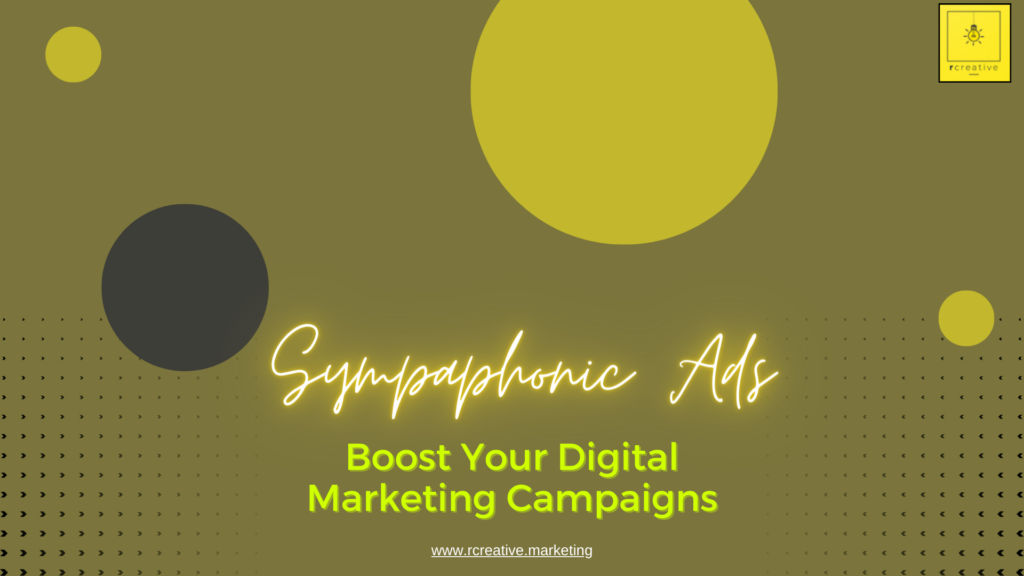Here’s why AI copywriters aren’t scary to us human writers
Take it from a writer: AI copywriting isn’t a monster out for our jobs. Here’s why we view AI as more a sidekick than a nemesis.
The Quick and Easy Guide to Blog Writing for your Bookkeeping Website
How can your bookkeeping business get more visibility online? Start a blog! Here’s a quick guide to get your going.
5 Types of Value Added Content That Can Increase Leads and Sales
Value added content will keep your website fresh, give you plenty of content to share on social media, and convert website visitors into leads and sales.
How to Get Your Business Blog Noticed – An Interview with Professional Copywriter Gabrielle Rystedt
What if, for free, you could sit down with a professional who writes effective content for businesses and pick her brain about how to blog right? Well this interview is the next best thing.
Should You Hire a Copywriter?
When I tell people I’m a copywriter, I usually get the same reaction: “Oh!” Followed by, “Cool. That’s pretty cool.” In general, most of the people I meet don’t quite understand what copywriters do, or how they get paid for it. Even my own mom wasn’t clear on what I actually do for a living and I’ve got a handful of family members who think that I “just do something online”. Or I get the fun mix up where people think that I do copyrighting – as in something related to copyright law. I do not, repeat, do not, know a thing about copyrights and patents! If you’re curious about copywriting, but haven’t ever had the chance to ask, pull up a chair and grab some coffee! And if you’re on the fence about hiring a copywriter, don’t worry. We’ll look into the pros and cons of hiring a copywriter, as well address times when you might be better off doing the work in house. First Things First: What do Copywriters Do? Copywriting is a profession as old as the idea of product marketing. If you’ve ever read an ad, you’ve read something written by a copywriter. If you’ve ever watched a television show, you’ve listened to lines written by copywriters (from a specialty you probably know as screenwriting). If you’ve ever read a product description in a catalog or on a website, you read the work of a copywriter. Copywriting is all around us. In the era of online business, we’re exposed to copywriting everywhere from websites to email newsletters and social media posts. Copywriters are the nameless lot responsible for much of the content you see and interact with…
Basic HTML Primer for Copywriters
Every copywriter should have some web development know-how before taking web writing jobs. Since the modern copywriter often has the responsibility to craft some – if not all – of a brand’s online content, it’s important that they have the ability to make that content really work online. If you’re a copywriter, it’s no longer enough to know how to write stellar content – you have to know how to make it work in front of your readers’ eyes. And if you’re a brand manager, it’s reasonable to expect that your copywriter knows how to do more than format a great Word document. After all, you hire a copywriter to sell your brand online. Why Should Copywriters Bother with Web Formatting? At a minimum, you the copywriter should be familiar with some online formatting basics. If you’re uploading posts to WordPress or sharing content on any web platform, you’re going to need a coding knowledge that’s little more robust than what clicking the “bold” or “italic” buttons at the top of your text editor can provide. Often, you’ll be the one posting content online or working with a marketing manager to get the work done. And unless one of you knows how to format outside of a GUI (graphical user interface), eventually you’re going to run into trouble when posting content online. Sure, you could call your web developer to give you a hand. But why waste the time when you could easily make a few tweaks yourself? And if your clients don’t have developers on staff or retainer, you’ll quickly become their hero. Better yet? Copywriters with web formatting chops can easily charge more for their content because they…
Top 10 Blog Posts Your Business Blog Should Include
We’ve been talking a lot recently about why your brand needs a blog and how to schedule time for accomplishing your creative to-do list. But before you sit down to write, it’s important to know what you’re going to write. While your editorial schedule should have you covered here, what happens when your ideas run dry? What do you do when writer’s block strikes before you even sit down to write? If you’re looking for some ideas to fill out your editorial schedule, consider some of the following ideas for your business blog posts: [text_with_frame id="368c1dbfefba91dceb946d322e0e86bc" content="‹¨›p‹˜›‹¨›em‹˜›If you find this article helpful consider giving it a share‹¯›nbsp;‹¨›/em‹˜›?‹¨›/p‹˜›" line_color="rgba(0,0,0,.07)" text_font="body" heading_font="heading" animation="none" animation_speed="2" animation_delay="0" __fw_editor_shortcodes_id="e6852c2dacc162bc8c34ba646905e841" _fw_coder="aggressive"][/text_with_frame] 1. Top 10 Lists Share your favorite accessories for the products you sell, leaders in your industry, productivity tips, or anything else you think your audience will find helpful. People love lists! If you are famous for your beauty tutorials, consider sharing a list of the top 10 products you always have in your makeup bags. If you do HVAC work, consider sharing your top 10 favorite air conditioners of 2018. Top 10 lists are easily sharable, and lend themselves well to distribution on other platforms. For example, they translate easily into pinnable images for sharing on Pinterest, can be made into infographics or are a fun way to drive some traffic to your YouTube channel. 2. Interviews Get out there and talk to someone else in the industry whom your audience would love to learn more about. You don’t have to interview the most famous person in your industry to get attention. Start with someone local with a business that does something complimentary to…
What’s the Ideal Blog Post Length?
Blog posts are an essential part of your marketing strategy. But when you’re developing your editorial schedule, it can be a challenge to target the ideal blog posts that your readers want to see. As you balance post types, topics and authors, you need to also consider your blog post lengths. But does length really matter? In short, yes. Blog post length is important for driving new customers to your site and to boost your SEO rankings. Aim to vary your blog post lengths to keep content fresh and make your site look like it’s run by actual humans sharing useful information. [text_with_frame id="368c1dbfefba91dceb946d322e0e86bc" content="‹¨›p‹˜›‹¨›em‹˜›If you find this article helpful consider giving it a share‹¯›nbsp;‹¨›/em‹˜›?‹¨›/p‹˜›" line_color="rgba(0,0,0,.07)" text_font="body" heading_font="heading" animation="none" animation_speed="2" animation_delay="0" __fw_editor_shortcodes_id="e6852c2dacc162bc8c34ba646905e841" _fw_coder="aggressive"][/text_with_frame] Want to mix it up? Here are the top blog post lengths you should aim for: Short (300-600 Words) Short blog posts offer information quickly and concisely. Your readers can be in and out without dedicating any significant time to your post. While this might sound like a bad thing, in a day and age where readers have shorter attention spans than ever, it’s actually not. When writing short posts, aim to cross the 300 word threshold – anything shorter works against your SEO – but keep it below 600 to maintain brevity. A lot of marketers still think that the 500-800 word “essay” post is best, but when everyone’s doing it, no one stands out. Don’t blend in with the crowd. Long (1,000-2,000 Words) Long form blog posts are very popular right now, and for good reason. They give your readers more than a bit of information to whet the whistle and they are…
Say Hello to Your Virtual Front Office Staff: Your Blog
When you have an online business, it can be challenging to convey a personal connection with those who enter your online store. Whether you’re selling high end clothing or virtual coaching services, you need a front office staff that lets your customers get to know you. After all, personal connections go a long way when you’re trying to make sales or retain clients. If your brand exists exclusively online, you need every page of your website to welcome visitors to connect with you at a deeper level. And you need a central location where visitors can engage more deeply to get answers to questions and learn more about the products and services that you offer. This is where your blog comes in. It's helpful to view your company blog as your front office staff. Here are some ways that your blog can act as your virtual receptionist and sales staff, so you don't have to do all the heavy lifting on your own. [text_with_frame id="368c1dbfefba91dceb946d322e0e86bc" content="‹¨›p‹˜›‹¨›em‹˜›If you find this article helpful consider giving it a share‹¯›nbsp;‹¨›/em‹˜›?‹¨›/p‹˜›" line_color="rgba(0,0,0,.07)" text_font="body" heading_font="heading" animation="none" animation_speed="2" animation_delay="0" __fw_editor_shortcodes_id="e6852c2dacc162bc8c34ba646905e841" _fw_coder="aggressive"][/text_with_frame] Say Hello to Your Receptionist For many visitors to your site, your blog is the first place where they’ll be introduced to your brand. Sure, there’s a lot of hype about custom landing pages, but in truth, there are still loads of customers who will visit a company blog before interacting further with the brand. It’s critical that your blog acts as an attentive receptionist to capture new audiences and guide them to the pages that’ll answer their questions. Just as a receptionist in a physical office location gives direction and helps field simple questions, your…
12 Ways to Use Value Added Content to Generate (and Nurture) Leads
Value added content is exclusive content that your audience cannot get anywhere else.Perhaps you have a blog and you've even been expanding into other forms of value added content. Yet you still are not generating the leads you want with that content.Value added content is the core of any robust inbound marketing strategy but you still need to leverage it. Merely publishing your content won't (usually) earn you customers.So here are 12 ways to use your value added content to generate leads: 1. Genuinely Help Your Readers Your content is not "value added" unless it is adding value to your readers. Your first goal with every piece of content you publish should be to help your readers - add value to their lives and businesses. Your potential customers can usually sense self-serving and useless content within seconds of loading your page. And when they sense this they "bounce" to another website. Keep your bounce rate low and generate more leads by genuinely helping your readers. 2. Build Trust in Your Brand Trust is an important part of any sales process. A purchase is an act of trust. Your customer is trusting that your service or product is going to solve a problem, improve his life, or help him reach his goals. A purchase is an act of faith in you, your business, and what you offer your customer. You need to build this trust early. Value added content is the perfect vehicle for building that trust. As you genuinely help your readers you build trust with them. Help them whether they buy from you or not and, paradoxically, they will be more likely to buy. 3. Invite Subscribers Email marketing…





